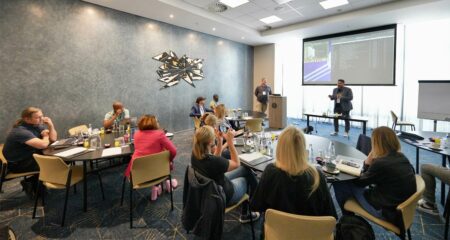 According to Albert Einstein, “life is like riding a bicycle. To keep your balance, you must keep moving.” Today, as we’re dealing with an unprecedented rate of technological change, these words seem particularly poignant for all modern business and IT leaders.
According to Albert Einstein, “life is like riding a bicycle. To keep your balance, you must keep moving.” Today, as we’re dealing with an unprecedented rate of technological change, these words seem particularly poignant for all modern business and IT leaders.
With things not set to slow down anytime soon, standing still is the most likely recipe for disaster. But on the other hand, forward momentum, if it’s well directed, will help key decision makers maintain their balance and get their businesses to where they need to be.
In today’s constantly evolving, increasingly software-driven world, we have become reliant on smart mobile devices for instant access to information, data and services. New customer expectations, competitive pressures and accelerated technological advancement are presenting organisations of all types with risks and challenges that must be addressed. However, at the same time, they’re also offering fresh opportunities just waiting to be exploited.
International Data Corp forecasts that businesses will spend nearly US$1.2-trillion globally this year on digital transformation projects, demonstrating a growing recognition that IT investment is both essential and worthwhile. IT has transitioned from being regarded as a necessary cost centre to becoming a strategic business driver that is essential for empowering innovation. Businesses in all sectors — notably manufacturing, retail, transport and professional services — are increasingly using IT to create a competitive edge in the current digital economy.
Software-defined infrastructure (SDI) has become a vital component in this transformation story. It effectively separates and frees application software from any direct dependence on the underlying hardware, providing the flexible IT plumbing needed to deliver agility, fast responses and innovation.
What’s more, software-defined platforms make it possible to quickly and easily provision dynamic pools of compute, storage and networking resources.
Embracing public cloud, private cloud, or a hybrid mix of both, is now necessary for projects involving new technologies, including automation, DevOps, container and cloud-native workloads and artificial intelligence (AI).
Getting from where you are to where you need to be
Many businesses were established before the digital era. While they have the advantage of a recognised market position and customer base, they also need to make the most of existing IT investments. For these organisations, a successful IT transformation is essential.
But how can leaders bring their companies into the present and prepare them for the future?
 1. Strategy and planning for success
1. Strategy and planning for success
Keeping track of industry progressions, evaluating current tech trends and staying on top of customer expectations, as well as the competitive and market landscape, are all essential for success. This way businesses can aim to be an industry disruptors rather than reactors.
To do so, C-suite executives must recognise the new enhanced role of IT in their business and provide it with an appropriate level of investment. IT is the catalyst for change and should be a full partner for business enablement, playing a full and central role within strategy and planning.
2. Open-source tools and solutions
While each organisation’s IT transformation strategy will be unique, open-source solutions should be a core part of the plan.
In the past, the attraction might have had more to do with lowering costs or avoiding the dangers of vendor lock-in. Now, it’s all about innovation. Open source is leading the way, with almost all the top technology trends at the centre of IT transformation efforts. Even proprietary software licensing giants like Microsoft are now fully embracing it in order to win new workloads and create new partnerships.
It’s difficult to see how open source could be ignored as a key part of your strategy when considering the prominence of projects such as Kubernetes and Cloud Foundry, OpenStack Cloud, Ceph for software-defined storage, among others. Likewise, Linux plays an equally dominant role enabling platform innovation for enterprise applications and multi cloud deployment.
It’s no surprise open-source talent is in such high demand, with 87% of hiring managers reporting difficulty in filling positions. To help fill this need, open-source veterans are focusing on delivering training and certification programmes, as well as helping deliver the best business outcomes.
3. Building an agile, innovation-orientated culture
For an IT transformation project to succeed, businesses must be flexible enough to constantly adapt and evolve.
“Agile” should be more than just a software development methodology — it needs refer to organisational structures, processes and talent pools. If adopted at all levels, from leadership to suppliers and partners, a cultural shift can improve efficiency, increase automation and speed up operations.
IT transformation doesn’t happen overnight, but when executed effectively, companies can reap the rewards of heightened innovation, improved processes and increased customer satisfaction.
Einstein was right — we must continue to move forward. Change is a constant factor and the only variable is how fast things will change. For this reason, transformation is becoming a continuous project that we need to get used to it — sooner rather than later.
- Matt Eckersall region director of Emea West at Suse
- This promoted content was paid for by Suse




